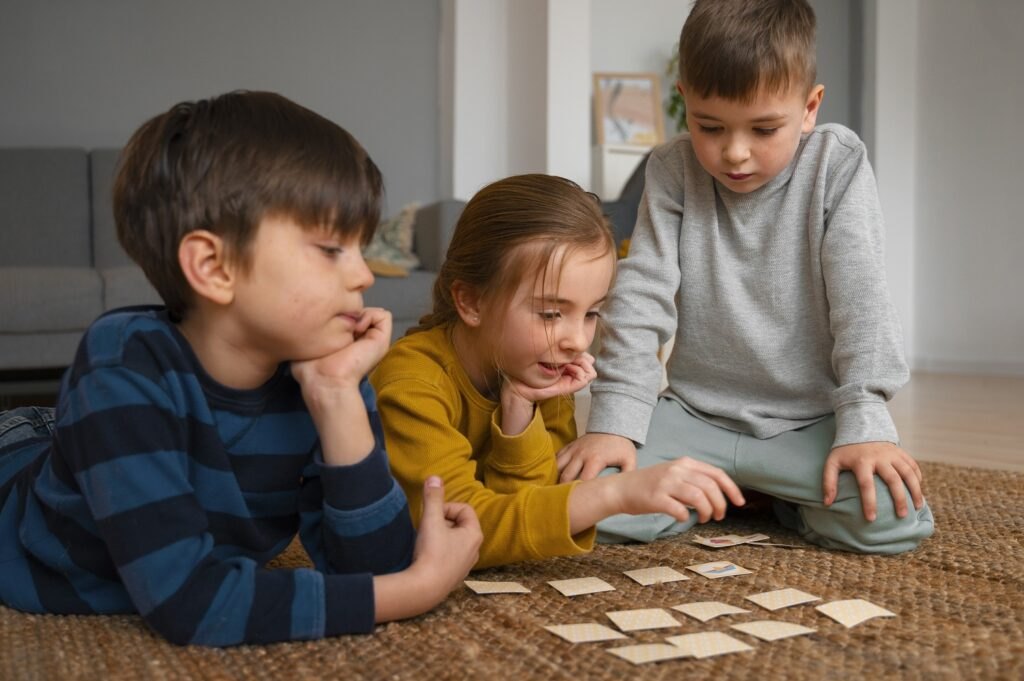Do you remember those moments when your child struggles to remember lessons, dates, names, and other important information? Introducing children to mnemonic techniques can be the key to making this process easier. Mnemonics, or the study of memory techniques, can make learning more enjoyable and effective. In this article, we will discuss some useful tips and exercises that will help children develop their memory skills in a fun and engaging way.
Why is mnemonics important?
Mnemonics is the art of using various techniques and strategies to remember information more easily. For children, this can be extremely helpful, as focus and concentration at a young age provide a solid foundation for future academic success. By introducing simple mnemonic techniques to children, we help them understand, absorb, and retain information.
Tips and exercises to help children develop memory skills.
Color technique.
One of the simplest and most effective mnemonic techniques for children is the use of colors. Associating colors with specific information can significantly ease the memorization process. For example, if we are learning geographical names, we can assign a different color to each country. We can also use colored markers to highlight the most important parts of the text in textbooks. If your child needs to remember a list of planets, assign a different color to each planet and create fun characters with them. Here’s an example:
- Mercury – orange, imagine a smiling orange flying in space.
- Venus – pink, imagine a pink ballerina dancing on the surface of the planet.
- Earth – blue, imagine a beautiful blue globe.
- Mars – red, imagine a Martian with red hair.
- Jupiter – yellow, imagine a huge yellow beach ball in space.
- Saturn – brown, imagine Saturn as a big brown ball with hula-hoop rings.
Songs and rhymes.
Music has a tremendous power of memorization, especially for children. Creating songs or rhymes with the content we want to remember makes the information more catchy and easier to retrieve from memory. By introducing rhymes into learning the alphabet, multiplication tables, or other important facts, we make the learning process much more enjoyable. This can be a great way to remember more challenging content, such as mathematical formulas or grammar rules.
The storytelling method.
Every child loves stories! Let’s use this natural inclination for learning. Let’s create stories related to the information we want to absorb. The more creative and unusual the story, the easier it will be to remember. For example, if a child needs to remember the order of the planets in the Solar System, we can create a story about a space journey where we visit each planet.
Creating abbreviations and acronyms.
Abbreviations are an excellent tool for remembering longer lists or sequences of information. The idea is to create an abbreviation from the first letters of each item we want to remember. Help the child come up with abbreviations or acronyms that will help them remember longer lists of information. For example, to remember the cardinal directions (North, South, East, West), we can create the abbreviation “NSEW.” This simple approach will greatly facilitate recalling the full information.
Games and interactions.
Learning through play is always a hit! Let’s use board games, puzzles, and quizzes to engage children in the memorization process. By playing together, we not only enable children to better absorb knowledge but also build strong family bonds.
Visual images.
One effective way to remember information is to create visual images. Encourage the child to illustrate the information in their mind. It can be something as simple as turning numbers into characters or objects. For example, to remember the year 1492, the child might imagine three sailing ships on a world map.
The method of loci.
This technique involves assigning information to specific places in the child’s imagination. Together, create a virtual map where you place the elements to remember. This could be, for example, a trip through a favorite park, during which you discover various pieces of information hidden in designated locations.
Reviewing materials.
Regularly reviewing information is key to solidifying it in memory. Regularly go over notes, books, or fact cards. Repeating the material after some time from the first memorization significantly increases the chances of lasting understanding and recall.
Mind maps.
Another great mnemonic technique is called mind mapping. These are visual representations of information that help see the relationships between different facts. Together with the child, you can create a mind map to the topic that needs to be remembered. For example, if your child is learning about nature, you can create a map where the main branch is “Animals,” and smaller branches represent different species.
Reviewing in the rhythm of the game.
Learning through play is always a hit! Create a memory game together with your child, where they will have to guess pairs of associations, dates, or names. It works on the principle of the classic game “Memory,” but with an educational element. The time spent together will not only strengthen the bond between you and your child but also enable effective knowledge acquisition.
Mnemonics is a wonderful adventure among techniques that will make learning easier and more enjoyable for your children. Let’s remember that every child has their preferences and learning style, so it’s worth experimenting with different techniques to find the one that best suits our little learner. The adventure with mnemonics not only enhances memory but also brings a lot of joy and satisfaction from the successes achieved.
Start this fascinating journey together into the world of mnemonics and see how learning can be a pleasure. Your children will surely appreciate your involvement and support in their educational journey. Happy learning!


